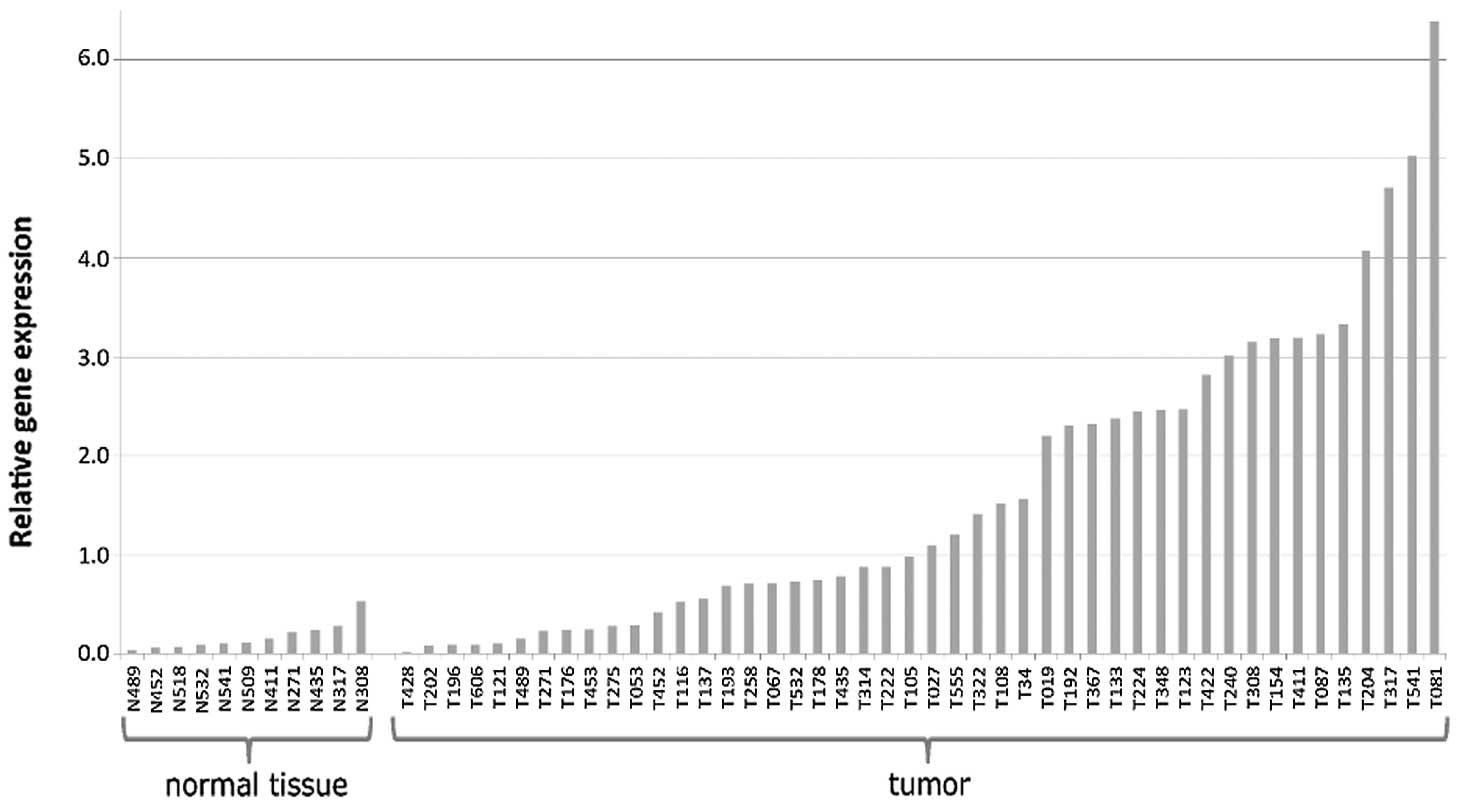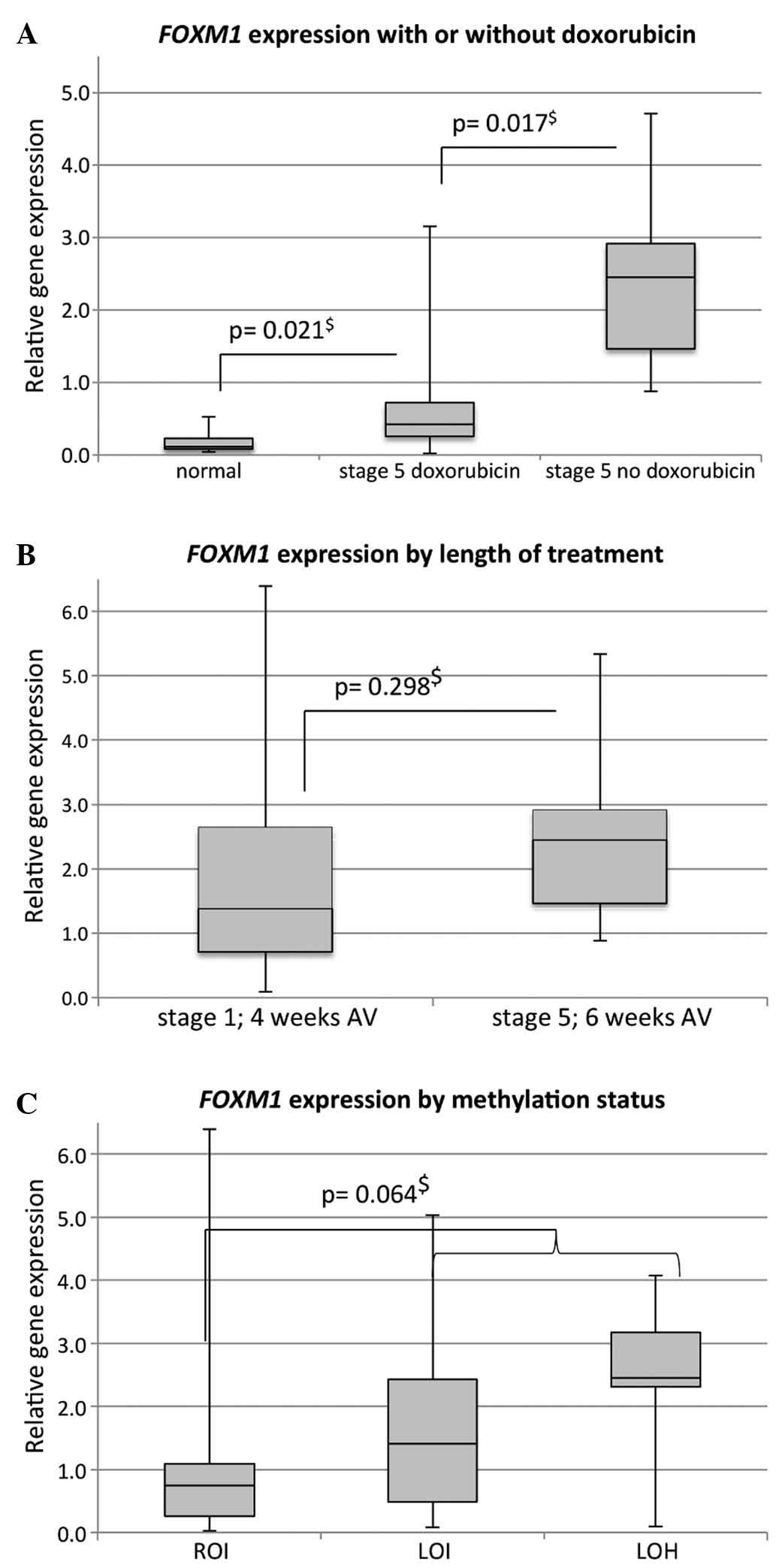Association of FOXM1 expression with tumor histology and prognosis in Wilms tumor: Potential for a new prognostic marker
- Authors:
- Published online on: August 5, 2016 https://doi.org/10.3892/ol.2016.4958
- Pages: 2854-2859
Metrics: Total
Views: 0 (Spandidos Publications: | PMC Statistics: )
Total PDF Downloads: 0 (Spandidos Publications: | PMC Statistics: )
Abstract
Wilms tumor (WT) is the most common pediatric renal malignancy. A recent ontogenic model suggests that undifferentiated tumor state, and hence poor prognosis, in WT is determined by stabilization of β‑catenin in the nucleus. Forkhead box M1 (FOXM1) is a downstream component of the Wnt pathway and promotes nuclear localization of β‑catenin. As elevation of FOXM1 gene expression is prognostic in various types of malignancy, we hypothesized that high FOXM1 expression in WT is associated with undifferentiated histology and thus poor prognosis. In the current study, the expression of FOXM1 mRNA was determined in 46 WT specimens and 11 renal tissue controls from patients undergoing tumor nephrectomy, and these data were assessed with regard to clinicopathological parameters. The results demonstrated an upregulation of FOXM1 in WT by 10‑fold compared to normal tissue. Expression differed significantly between controls and tumors of intermediate‑ and high‑risk histopathology (P<0.001, Kruskal‑Wallis), and distinguished normal tissue from tumors of good and adverse clinical outcome (P<0.001, Kruskal‑Wallis). Notably, FOXM1 expression was significantly lower (P=0.009) in patients that received preoperative doxorubicin. These results suggest that FOXM1 may serve as a companion diagnostic factor for doxorubicin‑based therapies in WT.












